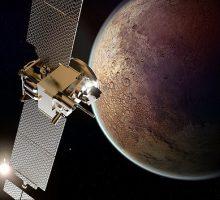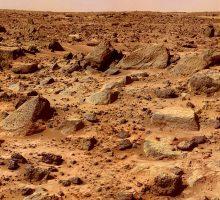- Introduction
- Physical Characteristics
- Exploration of Mars
- Colonization of Mars
- The Search for Life on Mars
- Ethics and the Colonization of Mars
- The Future of Mars Exploration
- Lessons from Mars
- The Importance of Space Exploration
- The Ultimate Goal: Interstellar Travel
- Final Thoughts
Welcome to my blog about Mars, the fourth planet from the Sun and the second closest planet to Earth. Mars has been a topic of interest and fascination for astronomers, scientists, and science fiction writers for many years. In this blog, we will explore the various aspects of Mars, from its physical characteristics to its potential for colonization and exploration.
Introduction
Mars has always been a mysterious planet. From its reddish hue to its polar ice caps, Mars has captured the imaginations of people for centuries. However, it wasn’t until the 20th century that we began to learn more about this enigmatic planet. With the advent of space exploration, we were able to send probes and rovers to Mars to study its surface and atmosphere.
Physical Characteristics
Mars is a terrestrial planet, meaning it has a solid surface like Earth. However, its surface is quite different from Earth’s. Mars has a thin atmosphere, with less than 1% the atmospheric pressure of Earth. The atmosphere is mostly composed of carbon dioxide, with trace amounts of nitrogen and argon. The thin atmosphere means that Mars does not have a significant greenhouse effect, which makes the planet much colder than Earth.
One of the most striking features of Mars is its reddish hue. The planet’s surface is covered in iron oxide, or rust, giving it a distinctive color. Mars also has the largest volcano in the solar system, Olympus Mons, which stands at a height of 22 km. In addition, Mars has the longest canyon in the solar system, Valles Marineris, which is over 4,000 km long.
Exploration of Mars
The exploration of Mars began in the 1960s with the Soviet Union’s Mars 1 mission. Since then, many countries have sent probes and rovers to study the planet. NASA has been particularly active in Mars exploration, with a series of successful missions, including the Mars Pathfinder, Mars Exploration Rover, and Mars Science Laboratory.
One of the most exciting developments in Mars exploration is the Mars 2020 mission. This mission includes the Perseverance rover, which landed on Mars in February 2021. Perseverance is equipped with a suite of scientific instruments, including cameras, spectrometers, and a drill, to study the planet’s geology and search for signs of past microbial life.
Colonization of Mars
In recent years, there has been much discussion about the potential for human colonization of Mars. There are several challenges that must be overcome before this can become a reality, including the harsh Martian environment and the lack of resources on the planet. However, many scientists and entrepreneurs are working on solutions to these challenges.
One of the key challenges for Martian colonization is the lack of a breathable atmosphere. To address this, some researchers are looking at ways to terraform Mars, or make it more Earth-like. This could involve releasing greenhouse gases into the atmosphere to warm the planet and create a thicker atmosphere. Another possibility is to create underground habitats, which would provide protection from the harsh surface conditions.
The Search for Life on Mars
One of the most exciting questions about Mars is whether or not life exists there. While there is no conclusive evidence of life on Mars, there are several lines of evidence that suggest it is a possibility. For example, Mars has water in the form of ice and seasonal flows, which is one of the key ingredients for life as we know it. In addition, the discovery of methane in the Martian atmosphere has sparked speculation that it could be produced by microbial life.
NASA’s Perseverance rover is equipped with instruments designed to search for signs of past microbial life on Mars. One of these instruments is the Mars Oxygen In-Situ Resource Utilization Experiment (MOXIE), which is designed to produce oxygen from the Martian atmosphere. If successful, this technology could be used to produce breathable air for future human missions to Mars.
Ethics and the Colonization of Mars
While the potential for human colonization of Mars is exciting, it also raises ethical questions. Some people have raised concerns about the potential impact of human colonization on the Martian environment, particularly if we were to terraform the planet. Others have raised questions about the fairness of using resources to colonize Mars when there are still many problems to solve on Earth.
It is important to consider these ethical questions as we move forward with plans for Martian colonization. We must balance the potential benefits of exploration and colonization with the potential risks and ethical concerns.
The Future of Mars Exploration
The future of Mars exploration is bright. In addition to NASA’s Perseverance rover, there are several other missions planned for the coming years. For example, the European Space Agency’s ExoMars mission will launch in 2022, and China’s Mars mission, Tianwen-1, successfully landed on the planet in 2021.
In addition, private companies such as SpaceX and Blue Origin are investing in technology to enable human missions to Mars. SpaceX has announced plans for a Mars colonization program called Starship, which aims to send humans to Mars as early as 2026.
Lessons from Mars
Exploring Mars teaches us valuable lessons about the universe and our place in it. One of the key lessons is the importance of perseverance and resilience in the face of adversity. Mars missions are incredibly challenging, requiring years of planning and preparation, and even the slightest mistake can have catastrophic consequences. However, the scientists and engineers who work on these missions are committed to pushing the boundaries of what is possible and overcoming obstacles to achieve their goals.
Another lesson we can learn from Mars exploration is the importance of collaboration and international cooperation. Mars missions are often collaborative efforts involving multiple countries and organizations, each bringing their unique expertise and resources to the table. This kind of collaboration is essential to achieving breakthroughs in science and technology and advancing our understanding of the universe.
The Importance of Space Exploration
Exploring space, including Mars, is not just about satisfying our curiosity or pushing the boundaries of human achievement. It also has practical applications that benefit society as a whole. For example, space exploration has led to advances in medicine, communications technology, and renewable energy.
In addition, space exploration can inspire the next generation of scientists, engineers, and explorers. By showing young people what is possible, we can encourage them to pursue careers in science and technology and drive innovation forward.
The Ultimate Goal: Interstellar Travel
While exploring Mars is a significant achievement, it is just the beginning of our journey into the universe. Ultimately, the goal of space exploration is to achieve interstellar travel, which would allow us to travel to other star systems and explore new worlds.
Interstellar travel is a daunting challenge, requiring breakthroughs in technology that we have not yet achieved. However, the potential benefits of interstellar travel are immense, including the discovery of new worlds and the potential for human colonization of other planets.
Final Thoughts
Mars is a fascinating planet that continues to capture our imagination and inspire us to explore the universe. The history of Mars exploration is a testament to human ingenuity, perseverance, and collaboration. As we move forward with plans for Mars exploration and colonization, we must continue to balance the potential benefits with the ethical concerns and challenges that lie ahead.
Exploring Mars is not just about satisfying our curiosity or pushing the boundaries of human achievement. It is also about advancing our understanding of the universe and the potential benefits that space exploration can bring to society as a whole. Ultimately, the goal of space exploration is to achieve interstellar travel and explore new worlds beyond our own. By continuing to push the boundaries of what is possible, we can ensure that our exploration of the universe continues to inspire and benefit generations to come.
ScitechVenture YouTube Channel













